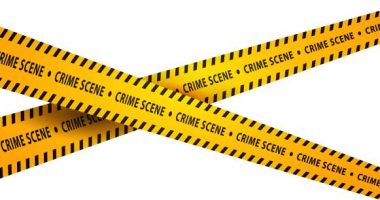The footprints are generally found in almost every crime scene. These marks are mostly found at the subsequent points:
- At the point of entry,
- At the scene where crime took place. In homicide and/or rapes where the struggle or fight has taken place. The route through the crime scene. This may or won’t be apparent.
- At the point of exit. It can sometimes be harder to seek out than at the purpose of entry.
Footprints are particularly helpful in personal identification of the suspect because each footprint is unique. Forensic examination of footprints give information that helps in linking the suspect with the crime scene or conclusively demonstrates that the suspect was present at the scene of the crime. Footprints also give indications about the number of individuals present at the scene of crime.
They may also indicate whether struggle has taken place or not, about the routes taken by the culprit, their assembly points, their conference site, their hiding places etc. Still some percentage of individuals in India including majority of the criminals in rural areas, usually move around bare-footed.
The naked footmarks are frequently found at and around the scene of crime. But, it has been found that due to following reasons the positive and definite identity of the footmark could not be established in many cases:

- Either the footmarks are incomplete or
- The prints or marks do not carry ridge details or
- The marks have only few individualizing characteristics that are not sufficient for establishing individuality or
- The specimen marks are carelessly lifted. Or the investigator overlooks these marks and valuable information is lost, this might have happened due to number of reasons like:
- Incomplete searching
- Entry and Exit points of crime scene aren’t known
- Arrived at the scene after the area has been walked everywhere, or
- Weather conditions.
It is well established that every body part including feet are in proportion to the total body height. Thus, the foot measurements can be useful to find approximate height of the person.
A capable crime scene investigator on reaching the crime scene attempt to recognise, collect various types of evidences to solve the crime by identifying the person who have committed the crime. These evidences within the sort of footwear and tyre impressions need to be preserved properly to be utilised within the court of law as follows:
Preservation of Footwear Evidence
Footwear impressions might be preserved either by taking photographs or by making casts in case of (3-D) depending upon the surface, by lifting, in case of 2-D dust prints
Photographing Track Impressions
In all the cases, before attempting to gather the track marks, it’s mandatory to record them first with assistance of notes, sketches then with photography. Photographs need to be taken both at a distance from the track marks and close to it. In a photograph taken from distance, the situation of the quantity of track marks should be fixed with regards to some fixed objects or landmarks.
Then to record every detail of the track marks, close-up photographs should be taken in conjunction with the track marks. While taking photographs or to avoid distortion, the following precautions should be taken:
- The lens of the camera should be kept in a line to the track marks.
- Proper arrangement should be made to urge greater depth of field and everyone the important points should be in sharp focus.
- Identification marks should be put along side the track marks.
- Proper lighting arrangement should be made.
- A tripod is used for most close-up photography.
- The quality of photographic films should excellent. Prints can be clicked either with Black-and-white or color films. High-resolution digital cameras give excellent results for track mark impression examination.
- Before taking photographs, any extraneous matter that may have fallen into the impression after it was formed should be cleaned away with the assistance of tweezers. If it is not possible to carry out this cleaning without disturbing the details of the impression, it should be omitted.
Materials trampled into the impression, like leaves or grass, shouldn’t be removed because they form a part of the impression and no details are going to be found under them. If a foot impression has been found in snow, it may be difficult to get a clear picture of it. Hard snow could also be dusted with aluminum powder, which provides a clearer picture. Cast of footwear impressions is usually made with dental stone powder. Other materials include paraffin, sulfur, and silicone rubber, can be utilized, but are less frequently used.
Casting Procedure for Foot prints
When 3-D track marks like a footprint is present, a positive cast of it should be made. Various types of casting materials are commercially available like plaster of paris and dental stone (which are a type of gypsum or calcium sulfate) etc. But plaster of paris is one of the most preferably used casting materials at the crime scene because it is inexpensive; easy to use and best to record the details of the marks exactly the way they were in reality. Another advantage of plaster of paris is that it solidifies very quickly.
Detailed steps involved in the procedure for making cast with the most common casting material plaster of paris are as follows:
· After photography of the track marks with and without a scale, examine the area including track marks carefully. Any precautions necessary to protect the integrity of the track marks must be taken.
· A physical barrier to limit the flow of the plaster must be found out around the impression i.e. with aluminum frame. Commercially manufactured metal frames are available for this purpose, but any material (cardboard, wood strips, metal frame) that will retain plaster and confine it to the immediate area of the mark will suffice. A little ingenuity with commonly available materials will solve most containment problems
· The recent methods for lifting wet footprint impressions by making use of dental stone or gypsum and liquid silicone mentioned as ‘microsil’
Preservation of Two Dimensional Footprints
Photography is always one of the best means to preserve the footprints particularly the two dimensional dust prints. After this, one of the following methods should be applied to preserve it by making caste
· Recovering and preserving the thing on which the footprint is formed.
Footprints are often found on objects stepped on by the criminal while entering within the dark through a window. If the window is broken, then all fragments of glass should be examined.
This type of print is usually best detected by allowing illumination from one side at low-angle. Detailed prints are found on paper or cardboard which will be scattered about the space during a secure burglary. All such loose objects bearing prints should be carefully preserved and sent to the laboratory for examination.
· Electro-static lifting
Readymade kits are available to lift dust print with electrostatic lifters, which devour dust prints onto Mylar-coated foil by means of electricity. This procedure has applications in certain situations in which suspects had walked on tile/hard floors.
· Lifting with photographic paper
This technique may be used when special lifters are not available. Black (exposed, developed, fixed, and washed) or white (fixed and washed) photography paper can be used according to the color of the material in the print.
· Enhancement of footprints present on any transparent or colored substrate
Various sorts of enhancers may often be used to develop the prints if present on different substrates or any sort of intervening medium or if they’re almost latent. Fluorescent fingerprint developers used when the footmarks or footwear marks or tyre marks are found on transparent substrates like glass doors or windows and white colored background materials like tiles, floors, etc.
Similarly there is another set of enhancers called Chemical Enhancers, which include the blood enhancement chemicals and residue material enhancers. The former class of enhancers comprises of patent blue, fushcin acid, luminal, amido black and leuco crystal violet which will be used to improve the standard of prints stained with blood; and therefore the later one consists of chemicals like bromphenol blue, safranin, potassium thiocyanate, diazoflouren and 8-hydroxyquinalone.
Forensic Investigation of foot prints
Class Characteristics
Those characteristics which are common to a particular group and which differentiate the members of that particular group from those of another group are termed as Class Characteristics. These comprise of sort of footwear like sneaker, chappal, heels, fleet, etc., size and shape, design or model of the footwear and therefore the name tag or logo of manufacturer.
In case of tyre marks tread width or Tyre stance, depth of pattern when present deep-set in mud, design and logo of manufacturing company are considered as class characters.
In case of bare or naked footmarks length of feet, width of feet and curvature of heel constitute the category characters.
Individual characteristics
The characteristics that specifically belong to one particular type and are not present in any other are termed as Individual characteristics. These include wear and tear marks present on insole as well as outsole of footwear, various features like scratches, cuts, etc. retained by the shoe’s outsole, any materials adhered to the outsole for an extended time that has gum, threads used while stitching/repairing a torn sole and most importantly the maker’s art like all patchwork if the footwear is handmade.
Individual characters just in case of tyre marks are almost like those those found in case of footwear marks. Wear and tear marks are the important individual marks. In both the cases, any extra material like sand, hair, fiber, paint chip, etc found embedded over the pattern should never be overlooked as they’ll act as important corroboratory evidence. Ridge pattern present either on the tarsals of feet, shape of the bulf line and arch of feet are individual features just in case of naked or bare footmark.
· A parallel match of the questioned and standard track marks is performed by making use of either the photographs or tracings of the plaster of Paris casts of the same. Composite matching by using a comparison microscope is another way of comparing the questioned and standard samples.
Presence of sufficient identifying characteristics gives positive identification. As such there is no fixed number as per the characteristics that should be looked for. Comparison is predicated upon the class and individual characteristics as discussed earlier.
· Analysis of walking pattern or Gait Pattern is an important part as it helps in crime investigation. It consists of a series of footprints or footwear impressions made by a person while walking or running and is highly individualistic and results obtained are reproducible.
- It includes the direction line, the walking line, the foot line, the foot angle, the principal angle, the step length and the step width etc.
- Direction line: a pretend straight line indicating the direction of walk or run.
- Walking line: A straight or zig- zag line produced as a result of placing one’s feet or footwear along the direction line.
- Foot line: A tangent indicating the inclination of foot with respect to the direction line.
- Foot angle: An angle between the direction line and therefore the foot line.
- Principal angle: It’s the sum of two feet angles, angle between foot lines of two feet.
- Step length: A straight line joining the heels of two feet.
- Step width: The space between parallels drawn to inner sides of both feet.
Determination of height, age and sex of the depositor can be very well performed by analyzing gait pattern of the same.
For more updates, subscribe to our blog.









